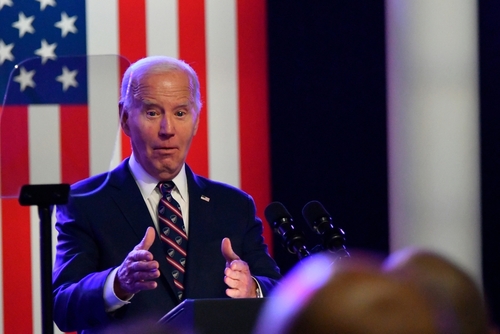
In a striking development within the current administration’s environmental policy, several affluent communities have been unexpectedly classified as “low-income,” granting them access to federal tax credits aimed at supporting electric vehicle (EV) charger installations. This revelation has sparked a wave of controversy as it appears to benefit the nation’s most prosperous areas.
The U.S. Department of Energy’s eligibility map now includes regions such as Martha’s Vineyard, Montauk, and parts of Nantucket, all known for their high real estate values and wealthy summer residents. The inclusion of these areas in the subsidy program is based on an IRS code provision that considers an area low-income if its median family income falls below 80% of the state or surrounding metropolitan area’s median, regardless of the actual affluence present.
Martha's Vineyard is home to the Kennedy's, Obama, and many of America's wealthy elite. Biden has designated it as "low income" so they can qualify for EV tax credits.
Biden takes care of his wealthy donors, not regular Americans.https://t.co/2zxhCXffSR— The Sardonic Patriot (@Mayflower_21) February 7, 2024
Critics argue that this policy misstep is a glaring example of how well-intentioned initiatives can be co-opted to serve the interests of the elite. Martha’s Vineyard, for instance, is a top-tier vacation spot with properties often valued in the millions. It is also home to high-profile figures, including former President Barack Obama, who owns a nearly $12 million estate on the island.
The situation is similar in Nantucket Island and Cape Cod, where large portions of these exclusive destinations are now eligible for EV charger subsidies. These locations are traditionally associated with New England’s elite and feature numerous multi-million dollar properties. The classification of these areas as “low-income” has raised eyebrows, considering the substantial wealth concentrated there.
Biden classifies wealthy Martha’s Vineyard as low income to qualify for EV subsidyhttps://t.co/Y6BhLnCkex
— Old Mean Geezer (@OldMeanGeezer) February 7, 2024
Further adding to the controversy, the entirety of Fishers Island in New York, an enclave frequented by old-money families and known for its luxurious sailing and golfing amenities, has also been designated as a “low-income” area. This grants it eligibility for the same federal subsidies, despite its historical association with dynastic American families like the Roosevelts and Rockefellers.
Montauk, a quaint yet expensive Long Island vacation spot popular among New York City’s affluent, is another beneficiary of this policy through 2029. Here, property valuations soar, with homes listed at staggering prices, some reaching as high as $17 million. The presence of numerous other high-value homes in the subsidy-eligible zone further underscores the incongruity of the “low-income” label.
This policy has been framed as part of a broader initiative to promote the adoption of EVs, particularly in underserved communities. The White House has touted the program as offering significant discounts on the cost of chargers to individuals and businesses in low-income and non-urban areas. However, the unexpected beneficiaries of this initiative suggest a disconnect between policy intentions and outcomes.
As the debate continues, questions arise about the fairness and effectiveness of such policies. The classification of wealthy enclaves as “low-income” for the purposes of federal tax credits not only challenges the credibility of the environmental initiative but also highlights the complexities of implementing equitable tax credit systems. Critics call for a reevaluation of the criteria used to designate “low-income” communities to ensure that subsidies reach the intended recipients and support a more inclusive and just transition to sustainable transportation.












